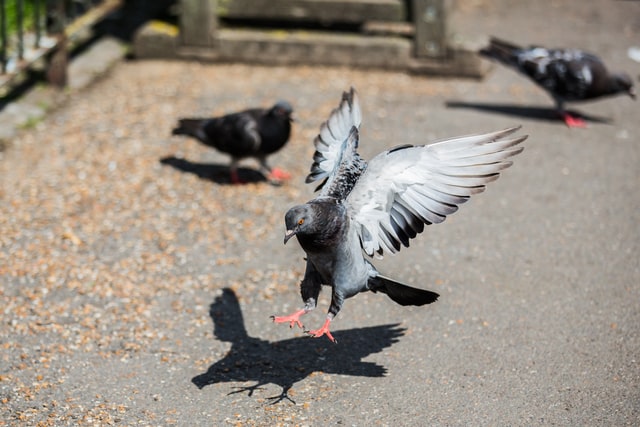
In recent years, pigeon overpopulation has become such a problem in cities worldwide, such as Las Vegas and New York, that they are commonly regarded as pests, placing them on the same level as rats, mice, and insects like ants and cockroaches.
City folk have polarized views on urban pigeon populations. Some love the birds and go out of their way to feed them. Others despise them and have no problem categorizing them as vermin. Regardless of how they feel about them, city dwellers must contend with substantial pigeon populations. Here are the reasons pigeon populations around Las Vegas and other cities have exploded:
Natural habitat
According to a Las Vegas pigeon removal service, pigeons have found their way to every corner of the globe, although they are not indigenous to these areas. Charles Darwin expounded the extraordinary resilience and adaptability of pigeons in his world-famous work ‘On The Origin Of Species’, in which he set out his theory of evolution and natural selection. Indeed, Darwin was fascinated by how more than 300 pigeon species arose from a single one.
Before humans began with agricultural and industrial endeavors, rock pigeons would nest along cliffs, predominantly along coastal areas. Their lifespans were short due to harsh living conditions until these wily creatures discovered that there were easier ways to survive. They began to follow human settlement patterns, finding safer nesting locations that afforded them more protection from natural predators.
Once people began to live in cities with large buildings, pigeons found the perfect habitat. They could nest in the eaves of such structures or on their roofs, safely tucked away from danger. Pigeons adapted to a new natural habitat, jam packed with conveniences and protections that made breeding conditions favorable. The temperate Las Vegas climate suits pigeons perfectly.
Reproductive habits
Pigeons living in urban areas reproduce more frequently than their country cousins. Life in the wild still poses a substantial danger to pigeons. However, urban-dwelling pigeons are prolific breeders as there is nothing to interrupt their reproductive habits. Pigeons mate for life and are ready to start breeding from the age of six months.
An average pigeon pair living in an urban setting could breed as many as eight times a year. Most female pigeons lay and hatch two chicks each time they reproduce. That means that one couple could be responsible for adding 16 pigeons to the local population annually. Within six months of their birth, each of those 16 pigeons is ready to start producing another 16 pigeons. At this breeding rate, the reasons for pigeon population explosions in city centers become self-evident.
Experts believe that the most effective way to bring pigeon populations under control is by interrupting the reproductive cycle. Therefore, pigeon birth control products are introduced into a flock’s food supply. This causes females to lay eggs that fail to hatch and can reduce the number of pigeons in an area by up to 50% within a year.
Food and water supply
Pigeons are living on easy streets in urban centers. They have ready access to food and water as they are excellent scavengers. From discarded hotdog buns to stagnant puddles of water, pigeons have their dietary requirements met by the humans they share a living space with. These birds are not above rooting through open garbage cans in their quest for food, and nothing seems to disagree with their digestive systems.
An abundance of food, water, and safe nesting locations create ideal breeding conditions, and pigeons take advantage of them by reproducing in significant numbers, as mentioned before. Cities provide all these necessities, facilitating overbreeding and its subsequent population explosion.
Lack of predators
Like all animals, pigeons form part of a food chain, having natural predators that hunt them. Pigeons are ill-equipped to fight off predators, with their only defense mechanism being to fly away. This is not an effective strategy when dealing with flying predators, such as falcons, hawks, and owls.
A pigeon’s land-bound predators include foxes, ferrets, snakes, and raccoons. However, these animals do not tend to make urban areas their preferred habitat. They tend to move on to other sites once human habitation takes over a location. Those that do not are trapped or killed to keep them away from human settlements. Since pigeons are not indigenous to all areas, there is often a lack of natural predators to keep the population numbers down at acceptable levels.
Navigation
Pigeons have powerful homing instincts so well-defined that armed forces used them to carry messages during the First and Second World Wars. They use these abilities to return to their residence even after being captured and released a long distance away.
Indeed, pigeons are such excellent navigators that pigeon racing and homing have become popular pastimes in many countries worldwide. Their ability to turn up again like bad pennies makes them a challenge to get rid of.



